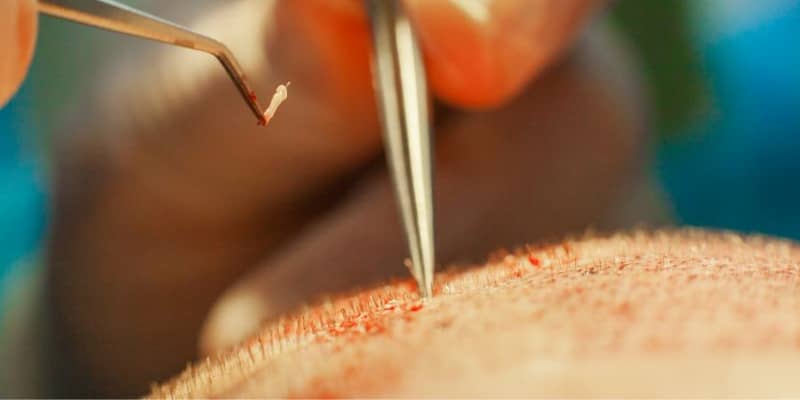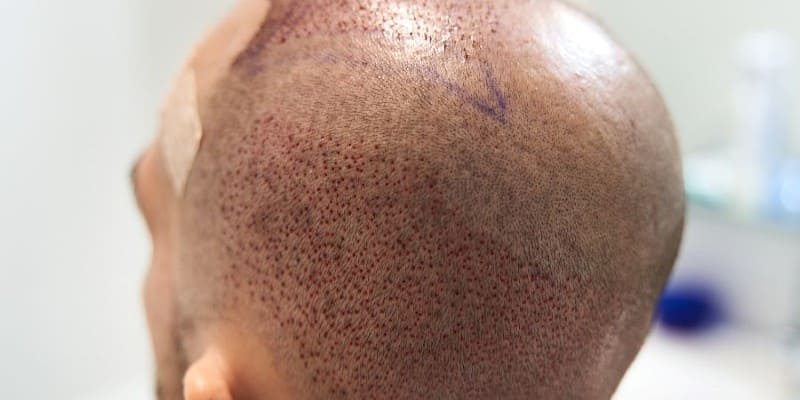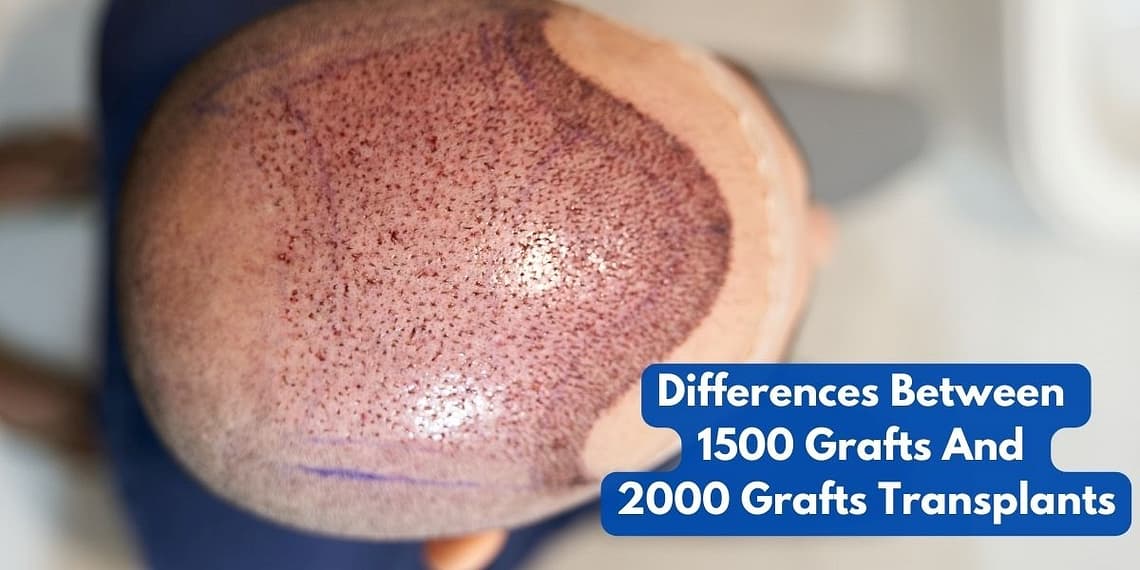Curious about the distinctions between 1500 grafts and 2000 graft transplants? This article provides insights on the distinctions between 1500 grafts hair transplants and 2000 grafts transplants. Discover answers to frequently asked questions like,
“How does the number of grafts affect the results?” and “Is there a significant variation in recovery time?” With clear and concise information, you’ll be equipped to weigh your options and choose the best approach for your hair transplant journey.
The Basics of Graft Transplants
What is a Graft Transplant?
A graft transplant is a surgical procedure performed to restore hair in areas where there is thinning or no hair growth. During the procedure, healthy hair follicles are extracted from a donor site (usually the back or sides of the head) and transplanted to the recipient area. These transplanted hair follicles, known as grafts, continue to grow hair in their new location.
How are Grafts Measured?
Grafts in hair transplant procedures are measured based on the number of follicles they contain. A single graft can contain one to four hair follicles. Hair transplant specialists typically calculate the number of grafts required based on the specific needs and expectations of the patient.
Understanding Hair Graft Terminology
When it comes to graft terminology, it’s essential to be familiar with some common terms:
- Follicular Unit: A group of hair follicles that naturally grow together in a cluster.
- Follicular Unit Extraction (FUE): A technique where individual follicular units are extracted one by one for transplantation.
- Follicular Unit Transplantation (FUT): A technique where a strip of scalp containing follicular units is harvested and then dissected into individual grafts.
- Mini Grafts: Grafts consisting of three to four hairs.
- Micro Grafts: Grafts consisting of one to two hairs.
- Mega Sessions: Procedures where more than 2,000 grafts are transplanted in a single session.

Factors to Consider When Deciding the Number of Grafts
Patient’s Hair Loss
The extent of a patient’s hair loss is an essential factor in determining the number of grafts needed for transplantation. Those with minor hair loss may require fewer grafts compared to individuals with significant hair loss. A thorough evaluation by a hair transplant specialist can help determine the optimal number of grafts for each individual.
Desired Hair Coverage
The desired hair coverage also plays a crucial role in deciding the number of grafts. If a patient wishes for maximum coverage and density, a higher number of grafts may be necessary to achieve the desired results. It is vital to communicate your expectations clearly with the hair transplant specialist during consultations.
Donor Hair Availability
The availability of donor hair is another crucial consideration. Patients with a higher density of donor hair may have more grafts available for transplantation. The quality and thickness of the donor hair also affect the number of grafts that can be extract.
Scalp Characteristics
The characteristics of the scalp, such as the texture, thickness, and laxity, can impact the number of grafts that can be successfully transplant. The condition of the scalp plays a significant role in determining the feasibility and outcome of the procedure.
Comparing 1500 Grafts Transplants
Hair Density
A 1500 grafts transplant can provide significant improvements in hair density, especially for individuals with minor to moderate hair loss. The transplant grafts are strategically placed to create a natural-looking hairline and add density to thinning areas. However, it is important to note that the final outcome varies from person to person.
Coverage Area
With 1500 grafts, it is possible to cover a specific area of the scalp, such as the front hairline or crown, effectively. The coverage can be customized to address the patient’s specific needs and hair loss pattern. It is crucial to discuss the coverage area with the hair transplant specialist during pre-operative consultations.
Procedure Duration
The duration of a 1500 grafts transplant procedure varies depending on various factors, including the individual’s scalp characteristics and the surgical technique used. On average, the procedure can take approximately 4-6 hours. However, the exact duration can be determined by the hair transplant specialist during the initial evaluation.
Recovery Time
The recovery time after a 1500 grafts hair transplant is generally around 7-10 days. During this period, the transplanted grafts settle into their new location, and any scabs or redness gradually diminish. It is important to follow post-operative care instructions provided by the specialist to ensure a smooth and successful recovery.
Potential Complications
Like any surgical procedure, 1500 grafts transplant carries potential risks and complications, although they are minimal. Some possible complications include infection, bleeding, scarring, and shock loss (temporary shedding of transplanted hair). However, with proper pre-operative evaluation and post-operative care, the risk of complications is significantly reduced.

Comparing 2000 Grafts Transplants
Hair Density
A 2000 grafts transplant can provide a significant increase in hair density, making it ideal for individuals with moderate to severe hair loss. The additional grafts allow for more coverage and enhance the overall thickness of the hair. However, individual results may vary depending on various factors.
Coverage Area
With 2000 grafts, a larger coverage area can be addressed compared to a 1500 grafts transplant. This allows for more extensive hair restoration, covering not only the front hairline but also the mid-scalp and crown areas. The specific coverage area can be discuss and planned with the hair transplant specialist.
Procedure Duration
The duration of a 2000 grafts transplant procedure is generally longer than that of a 1500 grafts transplant. It can take approximately 5-7 hours, depending on the individual’s scalp characteristics and the surgical technique employed. The exact time can be determine during the pre-operative evaluation.
Recovery Time
The recovery time after a 2000 grafts transplant is comparable to that of a 1500 grafts transplant, lasting around 7-10 days. The transplanted grafts will gradually settle and grow, resulting in the desired outcome. Adhering to the post-operative care instructions provided by the specialist is crucial for a successful recovery.
Potential Complications
Similar to a 1500 grafts transplant, a 2000 grafts transplant carries minimal risks and potential complications. These include infection, bleeding, scarring, and shock loss. However, these complications can be minimized by following the guidelines provided by the hair transplant specialist before and after the procedure.
The Cost Factor
Cost per Graft
The cost per graft in a hair transplant procedure can vary depending on various factors such as the geographical location, the reputation and experience of the surgeon, and the complexity of the case. Generally, the cost per graft decreases as the total number of grafts increases.
Total Procedure Cost
The total cost of a hair transplant procedure is calculating by multiplying the cost per graft by the number of grafts require. Therefore, a 2000 grafts transplant is likely to have a higher total cost compared to a 1500 grafts hair transplant. It is important to discuss the cost aspect with the hair transplant specialist during consultations.
Also Check: What Is Peptide Therapy And Its Benefits?
Frequently Asked Questions (FAQ)
Q 1: Are 2000 grafts always better than 1500 grafts?
The number of grafts required for a hair transplant depends on individual factors and desired outcomes. While 2000 grafts may provide more coverage and density compared to 1500 grafts in some cases, it does not necessarily mean they are always better. It is essential to consult with a hair transplant specialist to determine the optimal number of grafts based on your specific requirements.
Q 2: Can I achieve more natural-looking results with 2000 grafts?
The naturalness of the results achieved in a hair transplant procedure depends on various factors, including the skill and expertise of the surgeon, the quality of the donor hair, and the transplantation technique used. While 2000 grafts may provide a higher density, a natural-looking outcome is achievable with both 1500 and 2000 grafts, as long as the procedure is performing by a qualified specialist.
Q 3: Will the recovery time be significantly longer with 2000 grafts?
The recovery time after a hair transplant is not directly proportional to the number of grafts transplanted. While a larger number of grafts may require more time during the procedure itself, the recovery time does not necessarily increase significantly. The general recovery period remains similar, around 7-10 days, regardless of whether 1500 or 2000 grafts are transplant.
Conclusion
Choosing between a 1500 grafts and 2000 grafts transplant depends on individual factors such as the extent of hair loss, desired coverage, and availability of donor hair. They can evaluate your specific case, discuss your expectations, and provide personalized recommendations based on your unique needs. Remember, a successful hair transplant starts with thorough research and professional guidance.





